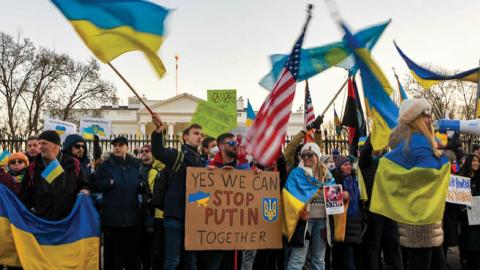As Western leaders struggle to respond to Vladimir Putin’s unexpectedly dramatic challenge to the post-Cold War order in Europe, the record so far is mixed. The West has assembled something approaching a united stance on the limits of the concessions it is prepared to make and on the nature of the sanctions it is willing to impose should Mr. Putin choose war. Neither hyperactive grandstanding in Paris nor phlegmatic passivity from Berlin has prevented the emergence of a common Western position. This is an accomplishment for which the Biden administration deserves credit.
Yet this is a defensive accomplishment, not a decisive one. As Mr. Putin demonstrated in his speech Monday, the Russian president is still in the driver’s seat, and it is his decisions, not ours, that will shape the next stage of the confrontation. Russia, a power that Western leaders mocked and derided for decades (“a gas station masquerading as a country,” as Sen. John McCain once put it), has seized the diplomatic and military initiative in Europe, and the West is, so far, powerless to do anything about it. We wring our hands, offer Mr. Putin off-ramps, and hope that our carefully hedged descriptions of the sanctions we are prepared to impose will change his mind.
At best, we’ve improvised a quick and dirty response to a strategic surprise, but we are very far from having a serious Russia policy and it is all too likely at this point that Mr. Putin will continue to outmaneuver his Western rivals and produce new surprises from his magician’s hat.
Read the full article in The Wall Street Journal


















